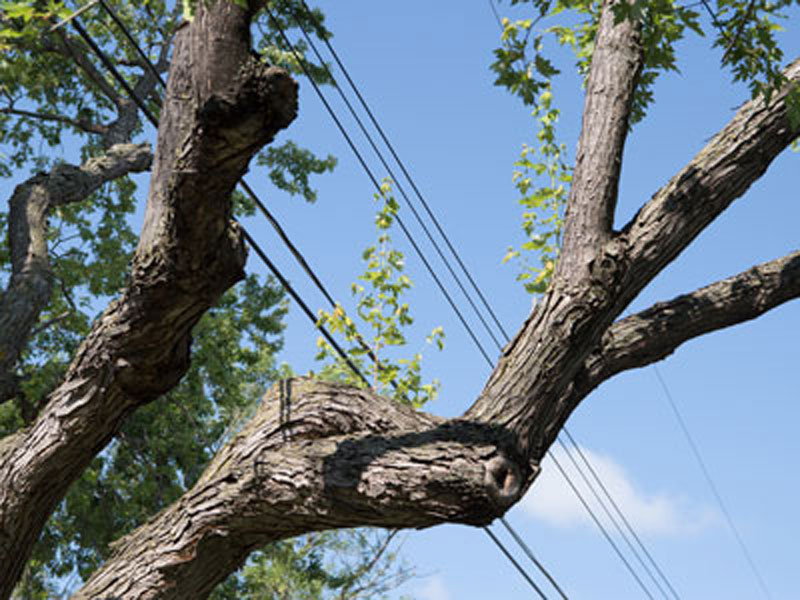Introduction:
The proximity of tree limbs to power lines can pose significant risks, leading to questions about responsibility and the best approach for removal. In this blog post, we will delve into the considerations surrounding tree limb removal near power lines and introduce Norman Tree Service, a reliable provider offering specialized services in Norman OK.

Understanding Responsibility for Tree Limb Removal Near Power Lines:
Utility Company Responsibility: When it comes to tree limb removal near power lines, utility companies typically bear the responsibility for regular maintenance. Their focus is on trimming and removing branches that could potentially interfere with power lines, ensuring the reliability of the electrical system and preventing power outages.
Property Owner Responsibility: Property owners also play a role in maintaining tree limbs on their land, especially those in close proximity to power lines. It is generally the responsibility of property owners to address tree limbs that may pose a threat, requiring regular inspection and trimming to prevent potential issues.
Collaborative Approach: Effective management of tree limbs near power lines often involves collaboration between utility companies and property owners. Open communication can facilitate a joint effort, with property owners reporting concerns and utility companies providing guidance on necessary actions for tree limb removal.
Norman Tree Service: Specialists in Tree Limb Removal Near Power Lines:
Focused Expertise: Norman Tree Service specializes in the precise and delicate task of tree limb removal near power lines. Their team comprises professionals with expertise in handling situations where branches pose a risk to the electrical system.
Emergency Tree Limb Removal: Understanding the urgency of addressing tree limb interference with power lines, Norman Tree Service offers emergency tree limb removal services. This ensures a prompt response to situations involving fallen branches or limbs that could compromise power lines.
Professional Assessment: In cases of tree limb removal near power lines, Norman Tree Service conducts thorough professional assessments. Certified arborists evaluate the situation, determining the severity of the issue and whether immediate removal is necessary to eliminate potential risks.
Safe and Efficient Practices: Equipped with state-of-the-art equipment designed for precision, Norman Tree Service employs safe and efficient practices in tree limb removal near power lines. Their professionals follow strict safety protocols to minimize risks and ensure a secure resolution.
Proactive Measures for Tree Limb Management:
Regular Inspections: Property owners can take proactive measures by conducting regular inspections of tree limbs near power lines. Identifying potential issues early allows for timely trimming or removal, contributing to the overall safety and reliability of the electrical system.
Reporting Concerns: Communication between property owners and utility companies is crucial. Property owners should report any concerns regarding tree limbs near power lines, allowing utility companies to provide guidance or schedule necessary maintenance.
Adherence to Regulations: Adhering to local regulations concerning tree limbs near power lines is essential. Property owners should familiarize themselves with these regulations to ensure compliance and contribute to a safer environment.
Conclusion:
Responsibility for tree limb removal near power lines involves a collaborative effort between utility companies and property owners. While utility companies are generally responsible for routine maintenance, property owners must actively participate in the process to ensure the safety and reliability of the electrical system. Norman Tree Service, with its specialized expertise and focus on safety, serves as a valuable partner in emergency and routine tree limb removal near power lines. By taking proactive measures, such as regular inspections and reporting concerns, property owners can contribute to a secure environment, minimizing risks associated with tree limbs and power lines.